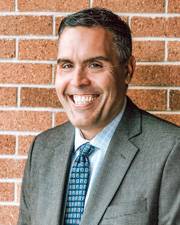Batavia City School’s board met earlier this week and discussed the latest proposed budget, which includes a 2.26 percent tax rate increase, the use of a mental health grant for five positions, and the prospective use of additional state aid for more personnel and/or to reduce the amount of reserves being used to offset expenses.
To summarize the budget as of Monday evening, the board is expected to vote on a proposed $60,373,861 plan during its meeting on April 22. That’s a 2.38 percent increase, or about $1.4 million more than this year’s budget. This spending plan would include a tax levy of $20,339,336 for a tax rate increase of 39 cents per $1,000 assessed value. That would be an extra $48.75 a year on a home assessed at $125,000.
The Batavian reached out to Superintendent Jason Smith with some questions about the newly introduced mental health grant and other items, and here are his answers:

1. The five positions being added with the mental health grant: that remaining $1.1 million is expected to retain those positions for how long? Will the funding go toward salary, benefits and teacher retirement? What's the plan once that funding runs out?
Answer: The District will plan to allocate as much of the funds as possible to cover all costs with these positions.
Not all of them are “new” positions, however, as three of them are instructional coaches who currently provide valuable support to our students and teachers—these positions are, in essence, being retained. The remaining two new positions will provide Social and Emotional Learning (SEL) programming to our students across the District.
Once the funding runs out, we can either pursue a new grant, consider placing some or all of these positions in the general fund, or combine the two. Another option would be to eliminate the positions upon the grant's expiration.
2. Can I please get a list of the types/locations of positions that aren't being retained at the district (similar, I believe, to what John Reigle requested), including the seven full-time that were COVID grant-funded, five reduced due to enrollment and four retirement/resigned positions?
Answer: Yes. That list is being developed and finalized as I write. Once I share it with the Board per their request and they have had time to review it, I will provide you with this information (likely next week).
3. If the district receives more state aid, and it's $300,000, how many teachers would that add, and how do you account for future expenses? Do you calculate cost per position for a year plus benefits and then hope to acquire more funding the next year, or calculate it for a few years out?
Answer: Should this come to fruition, we could conceivably restore 2-3 teaching positions back into the budget. We estimate the costs per position and will need to plan accordingly in future budgets with respect to state aid projections, use of reserves, tax levies, or some combination thereof.
4. With decreasing enrollment projections and class sizes remaining at or around 20 according to staff and a board member's statements, why the need for more teachers? Are other types of staff needed according to the district?
Answer: To be clear, the request is not to add “more” teachers but rather to try to keep our existing staff as close to current levels as possible.
While we are proud of our academic achievements, student needs continue to rise. As I have stated in previous articles, public schools currently provide a wealth of essential resources and services to our families across the community.
5. Do you feel the district has adequate staff coverage with the budget as it is?
Answer: I have been a Superintendent since 2012 and have consistently presented a budget to each Board with adequate staff coverage, which is fundamental to providing students with the quality education they deserve. Creating the district's budget is a comprehensive and collaborative effort involving close coordination between the District administration and the Board of Education. Our approach is holistic, aiming to balance the essential elements of student needs, staff levels, infrastructure maintenance, and innovative educational programming.
The current level of staffing was in part driven by COVID grant funding, which was designed to be used to close learning loss gaps through additional instructional support as well as to reduce class size.
We strive to make decisions that are not only educationally sound but also fiscally responsible to our tax-paying community. This necessitates a delicate balancing act, as our resources must be allocated in a way that maximizes educational outcomes while being mindful of our fiscal constraints.
The Board of Education ultimately has the responsibility of approving the budget, but this is done through discussions and a shared commitment to meeting our community's educational aspirations within our financial means. The question of staff coverage is not about adequacy in isolation but is one piece of a larger puzzle we diligently work to solve each year, aiming to strike a balance that serves the best interests of our students, staff, and community.
